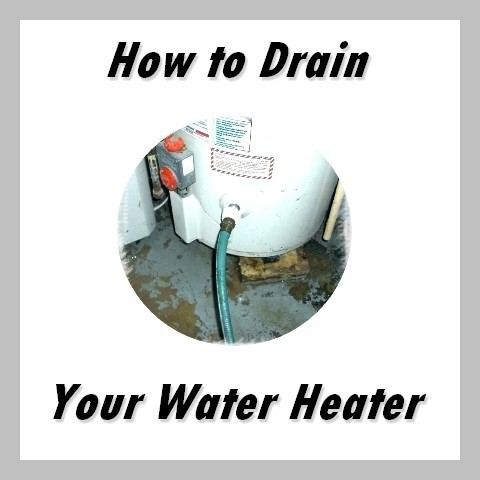Draining your water heater is an essential annual household chore. Over time, sediment gathers at the bottom of your water heater. If left to sit, it will harden, preventing your heating source from efficiently heating your water and eventually causing your water heater to burst.
If you hear popping noises coming from your water heater, chances are you are too late. Sediment has hardened, and you should prepare to purchase a new water heater soon, if not right away, to avoid an abrupt loss of funciton (perhaps before you've rinsed all the soap off of your body.)
However, if you maintain your water heater with regular draining, your water heater should last 8-12 years. (Most go no further than 8 or 10) To check the age of your water heater, you can call the manufacturer with your water heater's serial number.
Draining Your Gas or Electric Water Heater
(Before performing this task, be sure no one is planning to take a shower or use the dishwasher!)
1) Gather what you need:
- A heat proof bucket, (unless you want to use a nearby floor drain) •
- The garden hose
2) Determine if your water heater is gas or electric.
Remove the side panel look to see if there is a pilot light, if there is you have a natural gas hot water heater. If there is NO pilot light, then it is electric. Remember though that some natural gas heaters also will use electricity.
3) Turn of gas/power.
Turn the knob on the hot water heater's thermostat to “Off”. Turn off gas to hot water heater and turn off the breaker if it is both natural gas and electric. Flip the circuit breaker to OFF for an electric hot water heater.
4) Turn off the water.
Turn Off the cold water valve. Wait for water in the heater to cool down. (Attempting to drain scalding hot water will be problematic and dangerous.) Turn on the hot water in a sink or tub to drain water is still in the pipes, and keep them open until you're done. This will prevent the vacuum effect as you drain the tank.
3) Attach the hose.
Attach the garden hose to the drain valve on the side of the tank. Make sure the threads are on tight, otherwise there will be leaks. Place the end of the hose in the bucket, or a drain that will not overflow.
4) Open the drain valve and drain.
5) Detach the hose.
After you have finished draining the sediment from the hot water heater, turn the drain valve off and remove the hose.
6)Turn the cold water valve ON.
7)Turn the heating elements in the hot water heater to ON.
Nearly done!
8) Keep your taps open and once they return to normal flow, turn them off.
You will need to wait 30 minutes or so to test for hot water, sediment free.
Not in the mood to haul buckets, or run around turning valves on and off? Jersey Plumbing Service provides Water Heater Maintenance services. Give us a call! (908) 281-7101

Recent Comments